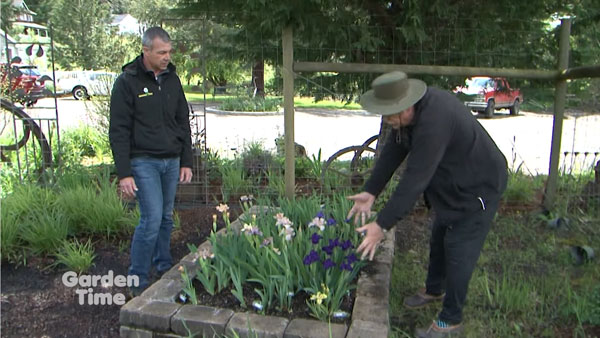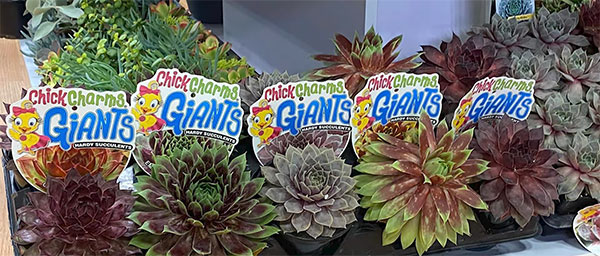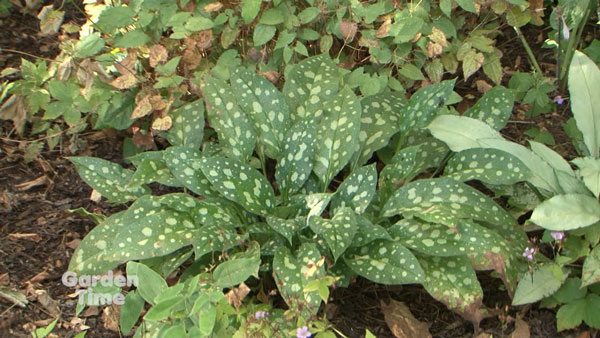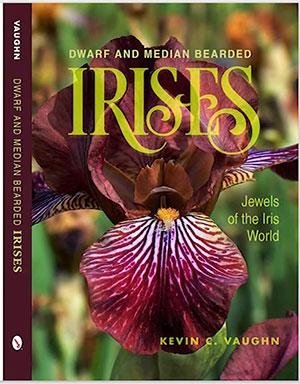|
Season 2 • Episode 15 - August 24, 2023

If you have ever wanted to know where
new plant varieties come from or how growers come up
with new, cool-looking plants then this podcast is right
up your alley. This month we visited the gardens of
Kevin Vaughn. Though not a household name, some of the
most popular plants in the industry have come from his
trial gardens and his impressive hybridizing skills. He
has developed new plants in these various families:
hosta, iris, daffodil, helenium, cyclamen, aster,
kniphofia, pulmonaria, sempervivum, gladiolus and
daylilies, to name just a few.

The process of hybridization is not always an easy one.
It starts when you select a plant species and then
choose the favorable plant traits that you want to have
in a new plant from that species. You may want a cool
leaf variegation or a new color in the bloom. It all
starts with the parent plants. Then you have to be on
top of the blooms before they open to isolate the pollen
before the bees get to it and bring in foreign pollen
from other plants. Then you bring pollen from the
selected plants that you want to cross and rub them
together. Sometimes this will require the use of a
forceps to make sure the contact is complete and cross
pollination occurs. Once this is done you then have to
isolate that bloom until seeds form to keep all other
foreign pollen from ruining the cross that you have
made. Once those seeds are formed they have to be
harvested, cataloged and saved until they can be planted
the next year to grow new seedlings of the plant you
hope to achieve. For some species, Kevin can be dealing
with 5,000-7,000 new seedlings a year. Once they are
planted and have sprouted, it could take years to see if
they bloom. For some species, like daffodils, it could
take up to seven years to see the results of his cross
breeding and up to ten years before that plant makes it
to market. This is a long process and many times, he
doesn’t get the specific plant characteristics that he
wants. Then it is back to the drawing board to start
over again.

This is not creating a GMO
(genetically modified organism) in the sense of splicing
DNA. It is modifying plants just as Mother Nature has
done for eons. The hybridizer is like a modified version
of the wild pollinator, just aiming for targeted
results. It does require a knowledge of genes and how to
mix dominant and recessive traits to try and get a new
plant, but there is no lab involved. The outdoor garden
flower bed is the only laboratory here.

Some of the things that Kevin looks for are unique
colors and foliage variegation for familiar plant
varieties. He is also looking to create other traits
too. For example, the ‘Chick Charms Gold Nugget’, a
sempervivum that turns a bright gold color in late fall
through late spring came from his breeding work, and
that led to his newer ‘semps’ that are 10-12 inches in
diameter. This passion for breeding new plants started
with his work in hostas. When he was much younger he
helped bring a bunch of new variegated and fragrant
hostas to the market. In fact, he has introduced over 70
new types of hostas to the retail market. If you are a
lover of hostas, you probably have one of his plants in
your garden. Kevin joked that some of his older
varieties have been on the market for so long that he
still sees them on the shelves of the local garden
centers.

This passion for making new plants
started in Massachusetts when Kevin was 12 and that
started a lifelong career path through college and Grad
school (his PhD was on hostas and their genetics), to
today. Now retired from a government job, Kevin devotes
a large portion of his days to working with plants. Now
you may ask yourself, how does a breeder of new plants
get paid? It depends, but there are a couple of
different ways that they can earn money for all the hard
work they do. One way to is just sell the whole plant to
a company or large propagator for a one-time payment.
Another way is to have an agreement with a company that
guarantees that you will receive a small portion of each
sale of the new plant for a given period of time. Either
way, it turns out to be a small payment for months or
years of hard work.
 So
what has Kevin been working on lately? Heat tolerance is
one thing. With the hotter summers and drier conditions
he has been looking at plants that can handle those
temperatures. He is also working on kniphofias, the red
hot poker plant. There are not a lot of color variations
in these plants and he is looking for other colors that
are different than the traditional red. Additionally, he
is working on plants that can be sold as garden plants
and also serve the cut flower industry for florists.
There is no end to the possibilities for this breeder. So
what has Kevin been working on lately? Heat tolerance is
one thing. With the hotter summers and drier conditions
he has been looking at plants that can handle those
temperatures. He is also working on kniphofias, the red
hot poker plant. There are not a lot of color variations
in these plants and he is looking for other colors that
are different than the traditional red. Additionally, he
is working on plants that can be sold as garden plants
and also serve the cut flower industry for florists.
There is no end to the possibilities for this breeder.
Not only is Kevin an outstanding breeder of amazing
plants, he is also an author. Kevin has written three
books on some of the plants he loves. ‘Beardless Irises,
A Plant for Every Garden Situation’, ‘Dwarf and Median
Irises, Jewels of the Iris World’ and ‘Sempervivum, A
Gardener’s Perspective of the Not-So-Humble
Hens-and-Chicks’ are all great reads with details of his
experiences as a hybridizer. They are available through
Amazon.
If all that wasn’t enough, Kevin also plays clarinet and
oboe for the
Salem Orchestra. He is also part of the
Salem Symphonic Winds and the
Festival Chorale Orchestra. Truly a man of many
talents!

PODCASTS
2022
• Return to Current Year Podcast List
 |